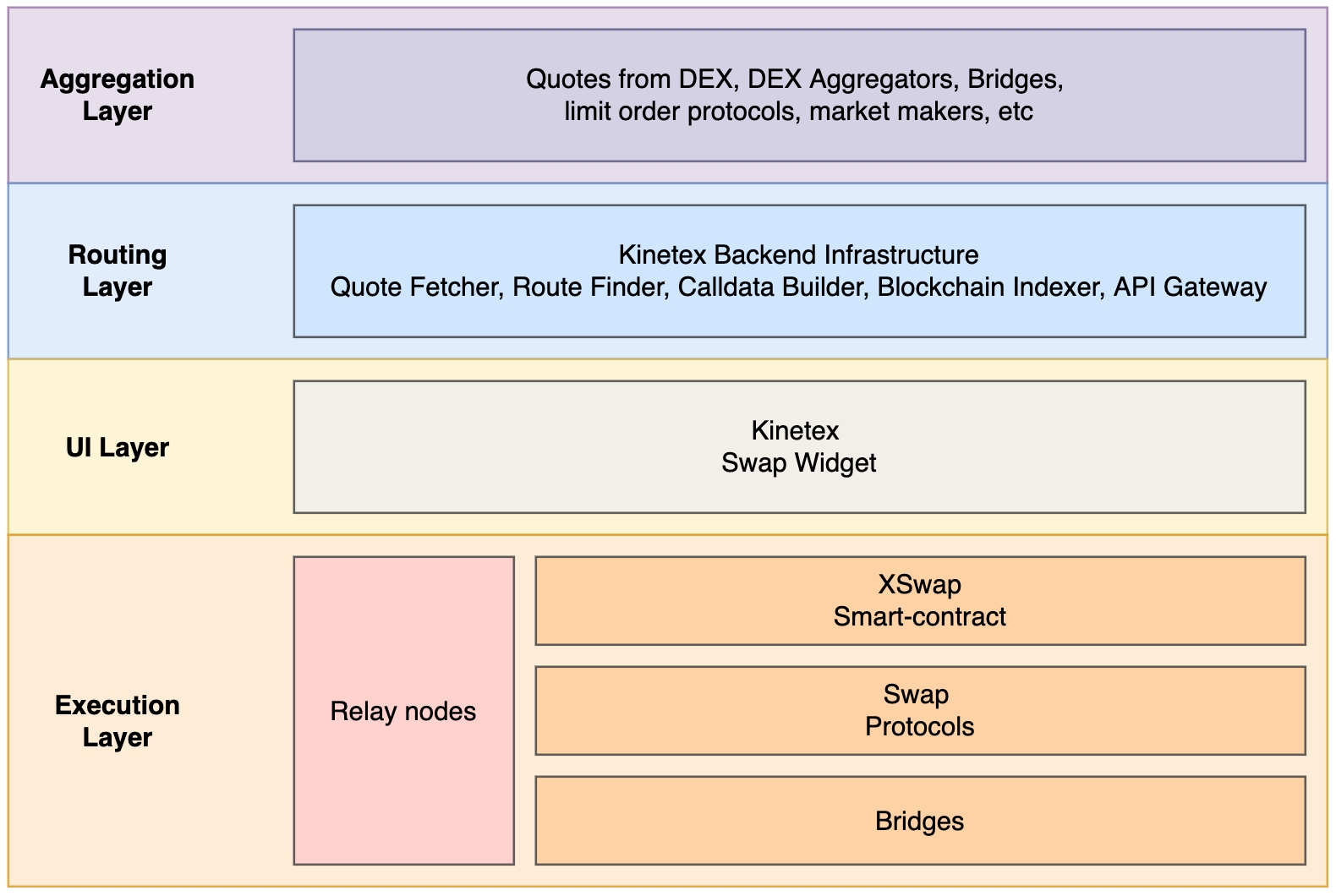Architecture

The Kinetex Aggregation solution has a multi-layered implementation with an architecture divided into four layers.
The Aggregation Layer is a set of aggregated solutions for providing trading liquidity, such as DEXex and DEX aggregators, bridges, limit order protocols, and other sources of liquidity.
The combination of many liquidity sources allows Kinetex to offer users the most favorable rates for the requested exchanges.
The Routing Layer is responsible for building optimal exchange routes. At this stage, all the necessary data (quotes, commissions, liquidity volumes, etc.) is collected, analyzed, and then used to build exchange routes and generate data to launch the Kinetex Aggregation on-chain infrastructure.
This layer uses the internal backend infrastructure, which includes a set of services such as Quote Fetcher, Route Finder, Calldata Builder, and API Gateway. See the Route Building section for more information.
The UI Layer defines user interaction with the Kinetex Aggregation product by providing a flexible and user-friendly interface (a dApp widget). At this level, the users can effortlessly go through all steps of the exchange process. These steps include, but are not limited to, the selection of assets for the exchange, flexible configuration of exchange parameters (gas, slippage, liquidity sources used, etc.), viewing of the detailed routing and all fees charged, monitoring the status of the exchange, a history of completed exchanges, etc.
The web application has a static open-source implementation and can be deployed on decentralized Web3 storage hostings (such as IPFS), which ensures the security and integrity of all displayed data. There is also the possibility of external integration as an embeddable widget.
The purpose of the Execution Layer is to conduct the exchange. This layer consists of a set of smart contracts and the infrastructure necessary for their launch. The network of relay nodes is used for this, and its task is to run Kinetex Aggregation contracts on supported networks.
The Kinetex Aggregation contracts themselves, in turn, interact with the contracts of the swap and bridging protocols, passing the users' exchanged assets through them, according to the given EIP-712 signatures.